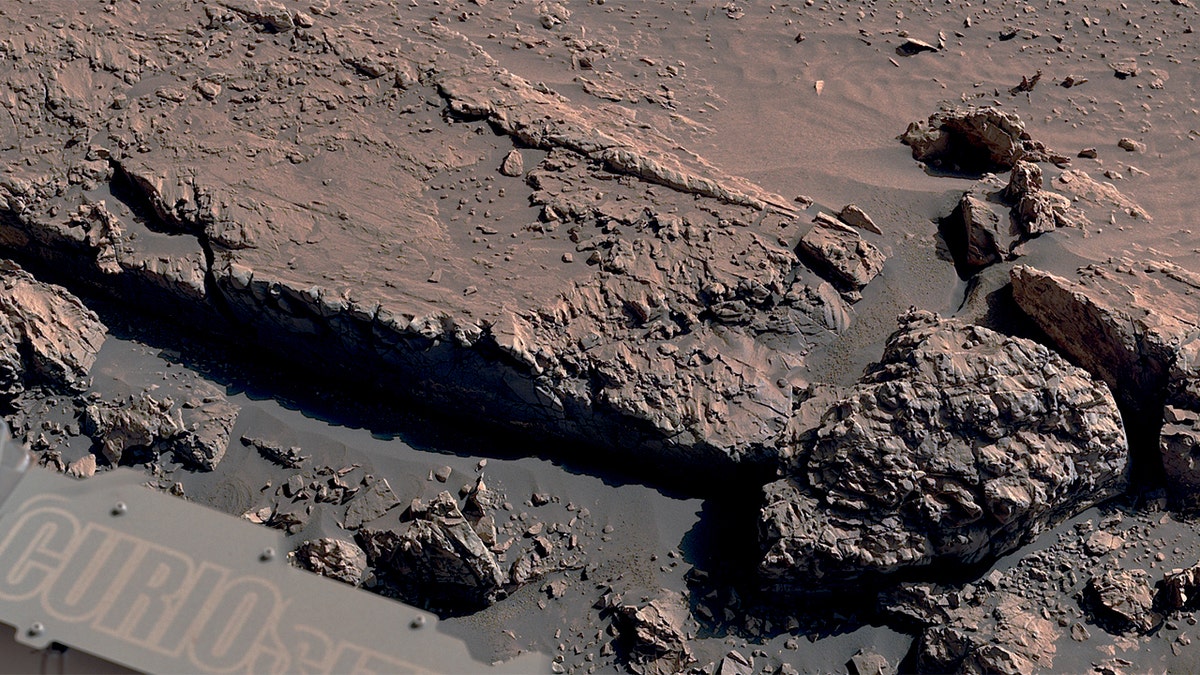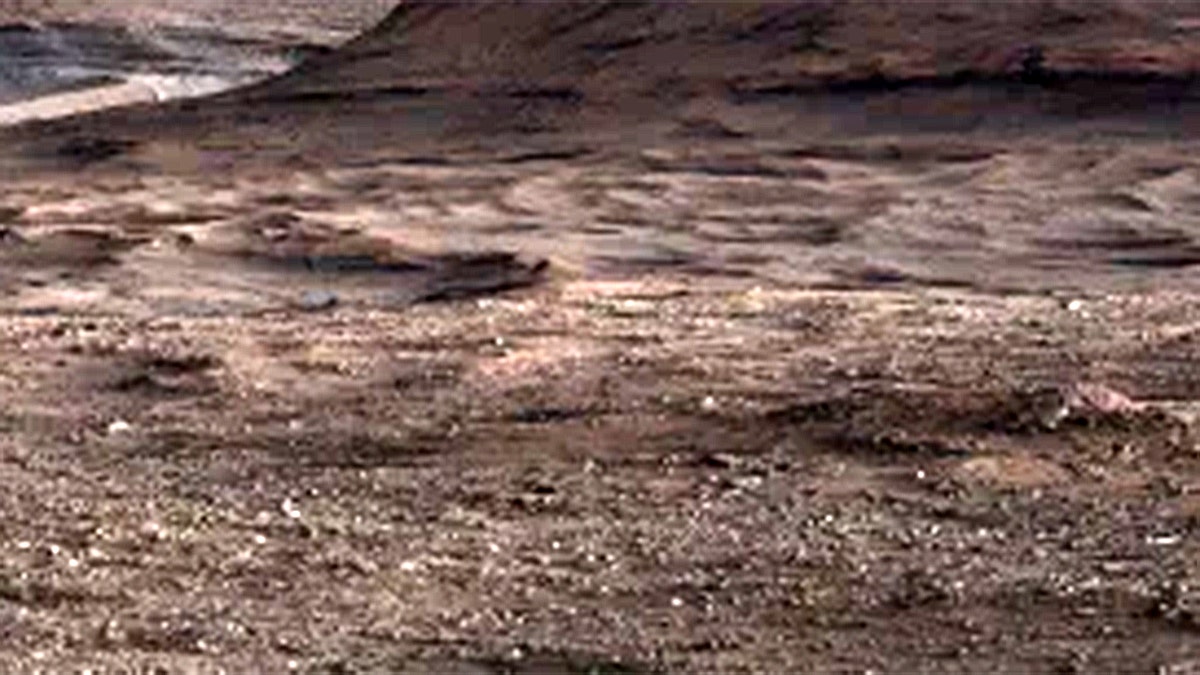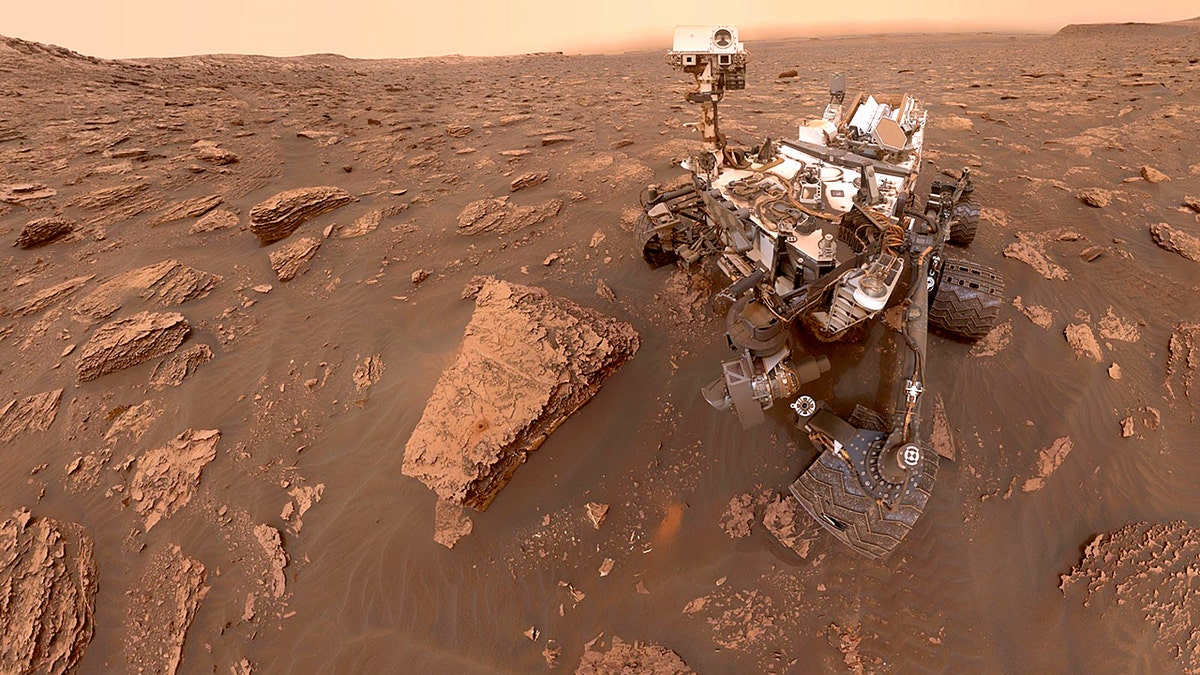NEWYou now have the option to listen to Fox News articles!
NASA’s Curiosity rover is examining a section of Mars that was only previously visible from space. This area showcases a distinctive “boxwork” pattern and signs of ancient waterways, which could include rivers, lakes, and possibly an ocean.
The rover’s new images and data have sparked inquiries about how Mars’s surface evolved billions of years ago. However, scientists still have not determined why the planet’s water disappeared, turning it into a cold desert.
Curiosity is currently located in Gale Crater, where evidence indicates that water was once percolating underground when the crater formed.
NASA reported that the rover discovered signs of groundwater in the crater while observing crisscrossing low ridges, with some only a few inches high, which geologists describe as exhibiting a boxwork pattern.
ARCHAEOLOGISTS UNVEIL ANCIENT WORKSHOP WITH UNFINISHED SCULPTURES ON GREEK ISLAND

NASA’s Curiosity rover captured images of boxwork patterns on Mars, released on June 23. (NASA/JPL-Caltech/MSSS)
Underneath the ridges lies bedrock, which scientists believe was formed when groundwater seeped through rock, leaving minerals that accumulated in fissures and hardened into a cement-like substance.
The formations have eroded over what NASA describes as “eons of sandblasting” from Martian winds, yet the minerals persisted, revealing a network of resilient ridges.
So far, the rover has analyzed ridges that appear more like a deteriorating curb.
HISTORY ENTHUSIAST DISCOVERS LOST MEDIEVAL MONASTERY THANKS TO ODD MAP SYMBOL

NASA’s Curiosity Mars rover captured this view of a region filled with boxwork patterns, which scientists believe may have formed due to groundwater billions of years ago. (NASA/JPL-Caltech/MSSS)
The patterns span several miles across a layer on the 3-mile-high Mount Sharp. The rover has been climbing the foothills of this mountain since 2014, as noted by NASA.
Scientists find the boxwork patterns intriguing because they have not been observed elsewhere on the mountain, either by orbiters or the Curiosity rover itself.
“A major question is why these ridges formed these specific patterns and why they are only found here,” remarked Curiosity project scientist Ashwin Vasavada at NASA’s Jet Propulsion Laboratory in Southern California. “As we continue our journey, we’ll be examining the ridges and mineral cements to validate our hypotheses about their formation.”
NASA indicates that these patterns exist in a section of Mount Sharp that formed during various periods of Mars’s ancient climate. Hence, as the rover ascends from older layers to younger ones, it essentially traverses through time, seeking clues about whether water existed on Mars and identifying environments that could have supported microbial life in the planet’s early history.
ANCIENT BEDROCK KITCHENS REVEAL EVIDENCE OF HISTORICAL FOOD PRACTICES, EXPERTS SAY

A self-portrait of NASA’s Curiosity Mars rover shows the robot at a drilling site called “Duluth” on the lower slopes of Mount Sharp on Mars in 2018. (NASA/JPL-CALTECH/MSSS/HANDOUT/Anadolu Agency/Getty Images)
“The rover is currently studying a layer rich in salty minerals known as magnesium sulfates, which form as water evaporates,” NASA reported. “Their presence here indicates that this layer formed as the climate became drier. Notably, the boxwork patterns suggest that even during this drying process, water was still present underground, leading to the changes we observe today.”
Recent discoveries on Mars could offer scientists further understanding of why these boxwork patterns are located in their specific area.
The bedrock between the ridges contains numerous small fractures filled with white veins of calcium sulfate, a salty mineral left behind when groundwater seeps through rock cracks, according to NASA. In the lower layers of the mountain, such veins were abundant, and at least one was enriched with clays. However, none had been identified in the sulfate until now.
“That’s quite surprising,” stated Curiosity Deputy Project Scientist Abigail Fraeman from JPL. “These calcium sulfate veins used to be prevalent, but they have diminished as we ascended higher on Mount Sharp. The team is eager to understand why they have reappeared at this elevation.”
The Curiosity rover was launched on November 26, 2011, and landed on Mars on August 5, 2012. Its mission aims to determine if Mars ever had conditions suitable for life, and early findings revealed chemical and mineral evidence of environments that could have supported life in the past.


